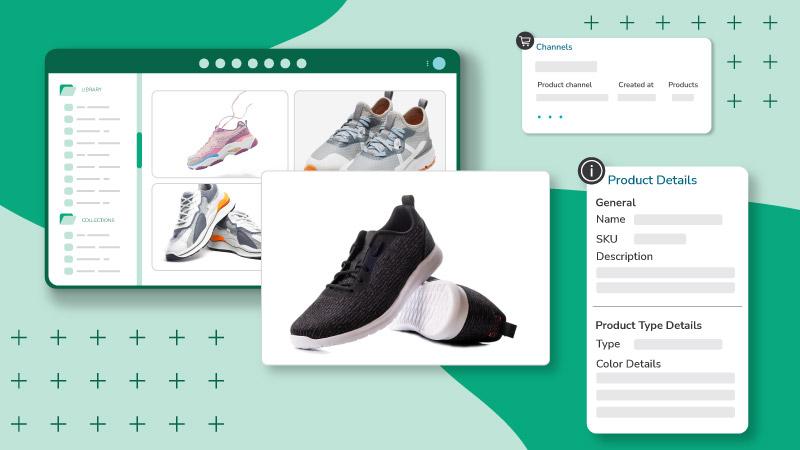What is a product information manager?

Managing product information is a key part of running a successful e-commerce business. It requires attention to detail, strategic thinking, and a clear understanding of today’s digital landscape.
Enter a product information manager — also referred to as a product data manager — they ensure that product information is accurate, consistent, and engaging across all channels. Think of them as the gatekeepers of product content — responsible for collecting, organizing, and distributing information that supports internal teams and helps customers make informed decisions.
In this article, we’ll explore the essential skills every product information manager needs. From the growing role of software like product information management (PIM) systems to the importance of collaboration and strategy, this guide offers a full picture of how product information managers drive both operational efficiency and customer engagement.
Understanding the product information manager role
What does a product information manager do on a daily basis? Their responsibilities extend far beyond managing databases.
They must manage large product catalogs, streamline go-to-market processes, and ensure compliance with industry regulations and licensing requirements. Their work directly impacts sales and customer satisfaction by providing clear, compelling, rich content that supports purchasing decisions.
They also need to be in tune with evolving digital trends, adapt quickly to changes in product lines or inventory, and use tools like product information management and digital asset management (DAM) systems to stay agile and organized.
Collaboration is key to their success and product information managers typically work closely with teams across marketing, sales, and e-commerce to ensure everyone is aligned and product information flows smoothly.
These diverse responsibilities make the PIM job role both strategic and operational — essential for maintaining consistency and driving growth.

The evolution of PIM systems
The evolution of PIM software usage over the past decade has redefined how teams centralize and access product information. What started as basic databases for storing product specs have evolved into powerful platforms that centralize product information and connect smoothly with other tools across the business.
Today’s PIM solutions help teams manage product data more efficiently, collaborate across departments, and ensure consistency across channels. They’re not just data storage systems — they’re strategic tools that support content creation, campaign execution, and faster time to market.
How PIM and DAM work together
PIM and DAM systems serve different purposes but work best when integrated. PIM systems focus on storing and managing product specs, while DAM software manages visual assets like images, videos, and marketing collateral.
When used together, they create a powerful, unified content ecosystem. This integration helps product information managers deliver richer, more engaging product stories faster and more consistently.
For organizations managing large and growing product portfolios, a unified PIM + DAM solution can significantly improve efficiency, collaboration, and brand consistency across teams and channels.
Core responsibilities of a product information manager
Product information managers wear many hats. Some of their key responsibilities include:
- Centralizing and organizing product data
- Ensuring compliance with licensing and regulatory requirements
- Collaborating with marketing on product content and messaging
- Analyzing product performance data to support business strategy
But those are just the highlights — keep reading to take a deep dive on the top challenges and responsibilities for product information managers.
Navigating a dynamic market
Markets are constantly changing, and product information managers need to keep up. Agility is key, whether it’s new customer expectations, supply chain shifts, or a sudden product update.
Product management tools like PIM platforms help product information managers respond faster by streamlining updates and harmonizing data across every touchpoint. With the right tools, they can react quickly while keeping content consistent and reliable.
Accuracy and compliance in product data management
Inaccurate product data can lead to all sorts of issues, from disappointed customers to costly returns. That’s why accuracy is a top priority for product information managers.
They’re also responsible for ensuring that product content complies with both industry regulations and internal standards. Maintaining consistency supports better customer experiences, helps teams avoid legal pitfalls, and protects the brand’s reputation.
PIM platforms are designed to make it easy to keep product information organized, accurate, and up to date, in turn simplifying product information compliance.
Strategic thinking and content planning
Creating a strong content strategy goes beyond managing specs. Product information managers must think strategically, align content with broader business goals, and ensure that product messaging resonates with target audiences.
They work closely with marketing teams, use customer feedback to refine content, and ensure that every product page reflects the brand’s voice and value proposition. A thoughtful strategy and effective software solutions — like a robust PIM system — help streamline workflows and improve cross-functional collaboration.

Collaboration and communication across teams
Product information managers often act as a crucial link between departments. Their success depends on strong communication and collaboration, especially with teams in marketing, sales, and operations.
By creating shared processes, managing feedback loops, and promoting transparency, they help teams work more efficiently and deliver better results. Centralized PIM platforms support this collaboration by providing a single source of truth and reducing miscommunication between teams.
Driving SEO and online visibility
Product information managers play a big role in making products easier to find online. Structured, keyword-rich product data improves search engine visibility and enhances the customer journey.
Well-managed PIM systems help ensure content is optimized and accessible, in-turn simplifying efforts to boost both search performance and on-site user experience. PIM platforms also enable faster delivery to various digital channels, amplifying reach and discoverability.
Turning analytics into action
Analytics give product information managers the insights they need to make smart decisions. From understanding customer behavior to tracking product performance, they use data to improve content, forecast demand, and guide strategic planning.
Embracing adaptability and lifelong learning
The world of product information is always evolving. New platforms, new consumer expectations, and new regulations mean product information managers need to stay curious and adaptable.
Whether it’s learning a new system or adjusting to market shifts, the ability to evolve is essential. Ongoing training, industry research, and proactive learning help them stay ahead — and keep delivering value to their organizations.
How Canto helps product information managers excel
Canto PIM is built for today’s fast-moving digital landscape — combining the power of product information management and digital asset management in one unified platform. It gives product information managers a reliable single source of truth, making it easier to manage product data, visual content, and workflows all in one place.
Here’s what makes Canto PIM stand out:
- All-in-one PIM + DAM solution to manage product specs and digital assets together
- Custom attributes and metadata fields for more detailed product descriptions and better internal alignment
- AI-powered features that automatically tag content and streamline asset management
- Advanced search tools like AI Visual Search to locate products and assets instantly
- Built-in workflows, style guides, and content controls to support cross-functional collaboration
- Portals and product catalogs to package and share on-brand content effortlessly
- Media Publisher and channel mapping to deliver tailored content across platforms
- 40+ integrations with popular CMS, creative tools, productivity apps, and more
Beginner’s Guide to Digital Asset Management
Get your free overview guide to DAM platforms now.
